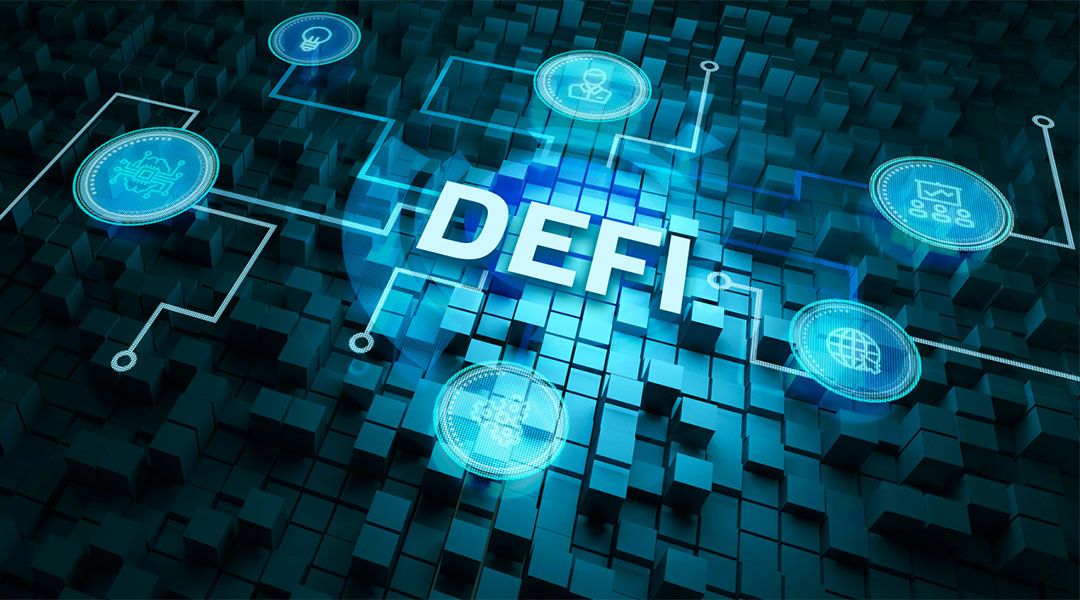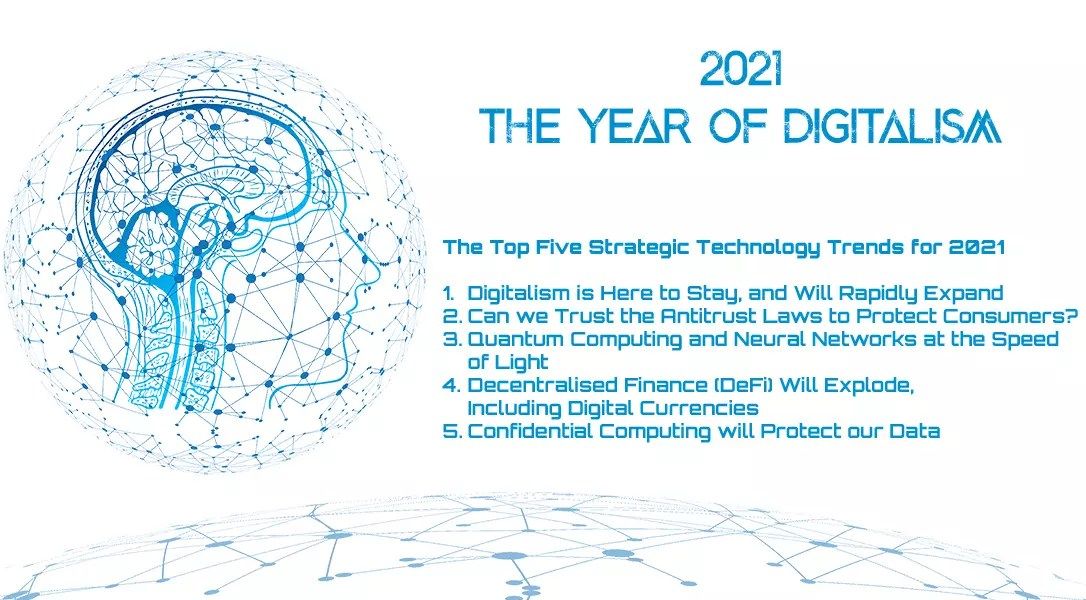Moving to a Tokenized Economy: Challenges and Opportunities

Since Satoshi Nakamoto released the Bitcoin paper in 2008, we have come a long way in our collective understanding of how tokens impact our economy. While the first decade of the crypto token industry was dedicated to exploring, developing, and to some extent exploiting (through pump and dump schemes and scam ICOs in 2017) this novel economic tool, the past years have been characterized by a variety of use cases seeing the light of day. As a futurist, I have been covering tokens for years now.
Slowly but consistently, tokens are changing the economic system. Not only in The Netherlands but worldwide, countries compete with favourable regulations and sandboxes to stand out in this global digital market. In The Netherlands, the 2Tokens Foundation aims to raise awareness, stimulate relevant discussions, and bring together knowledge/expertise to reduce the barriers to adopting tokenization and help realize wider social benefits. As such, 2Tokens organizes round table discussions with field experts to understand the role of tokens.

On May 10, 2022, 2Tokens organized the fifth roundtable, which focused on the challenges and opportunities of tokenization. The event took place in Amsterdam, and a variety of experts shared their insights on the state of tokenization in Europe, followed by lively discussions amongst all attendees on the challenges and opportunities of tokenization. This article is a summary of the findings of the event.
There will be no finance without blockchain
Professor Philipp Sandner from the Frankfurt School Blockchain Center delivered the first presentation. He shared with the audience how a European token economy is emerging, thanks to local and European regulations. The Market in Crypto Assets (MiCA) regulatory framework for digital assets aims to unite 447 million Europeans and combine local crypto regulations into one framework. This EU's crypto law will protect investors by requiring exchanges, brokers, and other crypto asset service providers (CSPs) to follow strict procedures.
Regulation is only one part of the puzzle when creating a token economy; the other part is, of course, standards. Daniel Coheur, co-founder & CCO at Tokeny, shared why standards are so important and why they are complementary to regulation. Standards will make trade easier, empower issuers of tokens and protect investors, control the transfer of tokens and enforce governance when necessary. However, standards take time to be organized, but this is not a bug; it is a feature as it forces all stakeholders to think carefully about the best possible system for all stakeholders.
Marleen Evertsz then shared how tokens can enable social impact investing and help small companies raise funds from local communities without the hassle and paperwork necessary today but with required liquidity for those local investors. Finally, Jonny Fry, CEO of TeamBlockchain, and Alex Bausch, Executive Chairman of 2Tokens, discussed the state of tokenization in 2022 and the need to re-educate as crypto is moving away from a tool to make a quick buck (whether legally or illegally) to a tool that can have a positive impact on the economy by creating real value.
Tokenization will become increasingly important, or as professor Sandner said, “there will be no finance, no capital market without blockchain." However, there are, of course, still plenty of challenges that need to be overcome, which was the topic of the roundtables that followed the presentations.
Challenges of Moving to a Tokenized Economy
Moving towards a tokenized economy is easier said than done. Many conflicting factors are at play, and not everyone has the same perspective. Therefore, the various groups looked at tokens from different angles to understand what challenges need to be resolved to move to a tokenized economy, including:
- Security tokens and financial models;
- Tokenized financing;
- Token regulation;
- Governance and stable coins;
- Crypto infrastructure from an ESG perspective;
- NFTs.
Let’s discuss each of these challenges and the best ways to overcome them:
Security tokens and financial models
Tokens offer the opportunity of fragmented ownership of (digital) assets in ways that have not been possible before. Of course, even today, any physical asset can be owned by a large group of investors, but organizing this would require significant work by notaries and lawyers and be utterly expensive. Tokens can change this, and they can be a unique and trustworthy way of a transparent representation of assets owned by a large group of people.
As such, fractional ownership through tokens can open new markets and allow the general public to enter them. However, fractional ownership does not only apply to assets such as art, cars, or other scarce and exclusive resources but can also be used in real estate or with corporate structures, potentially replacing the traditional stock exchanges and avoiding expensive intermediaries. As such, tokens can lower the barriers to fundraising and growth and make illiquid assets more liquid.
Finally, fractional ownership using tokens can significantly reduce the time to settle transactions (from weeks to minutes or even seconds) and enforce governance automatically (since governance is embedded in the code, i.e., the token).
Of course, fractional ownership has many challenges, most notably that the tools to fractionalize ownership using tokens are still relatively difficult to use. Decentralized Finance (DeFi) is not user-friendly, and understanding this new approach is difficult for most people. More importantly, although technically fractional ownership is possible under today's laws (when used by notaries and lawyers), a tokenized approach is not supported by regulation in most countries.
Achieving this regulatory support is challenging as often regulation is made too complicated (after all, it is just an investment class), resulting in an uneven playing field that is unclear to all market parties. There are no clear definitions, and there is currently no legal framework on how businesses and foundations can benefit from this tokenized approach. For example, it is not even clear which assets can benefit from tokenization and which not.
One approach to overcome these regulatory challenges is the creation of a sandbox and field labs. A sandbox allows stakeholders to experiment with innovative financial products or services in a live environment but within a well-defined space and duration. This will contribute to a better understanding of how tokens impact our financial system and, at the same time, will help create the required standards to scale the use of tokens.
Tokenized Financing
While fractional ownership offers one way to raise funds for a project, it is certainly not the only approach. There are many other ways of financing and raising capital, including using other types of tokens such as NFTs or utility tokens, to raise capital to run a project. Even societal projects can use tokens to raise funds and provide more transparency on how the funds are spent while providing liquidity for the investor in the project.
Apart from the regulatory hurdles already discussed, the biggest challenge with tokenized financing is the legal uncertainty of using tokens today. Especially for innovative use cases, most of the current legal system is not ready to deal with such innovations. Even if all can be organized, the question remains how to get investors on board for such a new financing mechanism, especially if most traditional investors are not familiar with innovative token financing. There are many misconceived ideas in the market, such as that cryptocurrencies are Ponzi schemes, and crypto still has a bad reputation from the ICO and today's NFT scams.
Overcoming these challenges is essential if token financing can ever take off. To achieve that, we require standards, protocols, standardized templates, and the education of all stakeholders involved. Decentralized Autonomous Organizations (DAOs) and DeFi protocols can be used, but these too require regulation and an educated investor base.
Token Regulation
Regulation in the token space has always been a hot topic. First, there was none, resulting in many problems, from ICO to NFT scams, leading to the industry asking to be regulated. Now that MiCA is about to become law, there are remarks of over-legislation and too strict rules that limit innovation. When it comes to legislation, a balance between innovation and regulation is required, though often difficult to achieve.
Europe played a leading role with the GDPR, and many companies outside the EU also adopted strict privacy regulations to avoid doing double work. However, with MiCA, the consensus amongst the experts was that this might be too strict, thereby harming the European innovation space.
According to professor Sandner, the MiCA regulation is a good framework but was created without regulatory competition in mind. After all, digital currencies are about geopolitics, and too strict procedures, including very strict rules for Euro-backed stable coins, could result in a possible innovation drain as crypto start-ups move out of the EU to avoid these procedures.
Especially because other countries, such as China with the state-owned digital Yuan, or the USA with the many private USD-backed stable coins, are at the forefront of innovation and are taking the lead. In comparison, the digital Yuan, which is still in its pilot phase, already has 100 million users, more than the population of Germany. The lack of Euro-backed stable coins or even a digital Euro could therefore harm the European start-up scene in the short run and the economic growth in the long run.
What is required is a clear government framework of rules and regulations, ideally globally aligned. After all, the tokenized economy is not limited by borders, and neither should regulation be. To achieve this, education is crucial, especially for government officials and lawmakers, to ensure that consumers and investors are protected while enabling innovation, mainly because the industry is not yet mature and is still developing and evolving.
Governance and stablecoins
Algorithmic stablecoins are risky, see the recent Luna collapse, while USD-backed stablecoins are often shrouded in mystery how they are backed. How can consumers be protected, and who is responsible when it goes wrong? Which rules and regulations apply, and who should enforce these rules and regulations? What control mechanisms should be in place to avoid consumers and investors losing money? There are plenty of challenges linked to stablecoins, and it resulted in a lively debate about how to govern them.
While regulation is all about the rules to control behaviour, governance is more about incentivizing good behaviour and enabling collaboration, in this case, to address the inherent risks associated with new technologies. It can serve as a mechanism to stabilize a new industry and create trust amongst all stakeholders. This is especially important when it comes to stablecoins positioned as a replacement for money, as we have seen with the collapse of Terra Luna's UST stablecoin.
Proper governance is challenging, especially when dealing with relatively new technologies such as stablecoins, where there is still a lot of uncertainty. That is why transparency is crucial, though unfortunately often lacking. Full transparency on how a stablecoin is backed would provide trust in the market and could prevent disasters such as Luna.
Achieving full transparency is not easy, though, especially in a market with so much hype and a wide variety of stablecoins. After all, anyone can create a stablecoin and bring it to market, seeking the most favourable regulations to launch the stablecoin. The more regulators from around the world would align their efforts, the better it would protect investors and consumers, but unfortunately, this is a massive challenge that won't be achieved in the short term.
Crypto infrastructure from an ESG perspective
One of the most common complaints about anything related to tokens is the excessive energy consumption. Crypto mining results in large amounts of CO2 emissions, and developing more energy-efficient solutions takes time. Bitcoin still uses Proof of Work, and Ethereum's Proof of Stake consensus mechanism, which could reduce its energy consumption by 99%, has not yet been rolled out. Although other blockchain networks use different consensus mechanisms that require less energy, most decentralized applications run on the Bitcoin blockchain or Ethereum.
A suggested mechanism to help investors and consumers understand the impact of their crypto on the environment is to generate Environmental, Social, and Governance (ESG) metadata. This metadata would inform the users about the energy sources used in the blockchain and the materials and components used to run it. If this metadata were stored on chain, it would provide environmental trust in a decentralized network and promote the development and use of renewable energy sources.
NFTs and New Business Models
Non-fungible tokens (NFTs) created a standard that allows the exchange and monetization of data and (digital) assets, which resulted in a massive NFT hype in 2021. For the first time in history, NFTs enable anyone to prove that they own a particular digital asset, including the provenance of that asset. However, there are plenty of challenges associated with NFTs, including uncertainty about what exactly you are buying, where it is stored, and whether or not it is something truly unique.
Due to these challenges, educating the public about NFTs and how they contribute to the economy is crucial. This would improve the reputation of NFTs, moving away from millions of dollars paid for JPEGs to digital assets that have utility and can be monetized. Therefore, from a financial perspective, it is important to define NFTs. Are they a currency, a security, a utility, or an investment, and what role do they play in transactions? Clarifying this would contribute to a more mature NFT market and a bigger impact on the global economy.
A possible use case discussed was connecting an NFT to a car. As part of the NFT, the owner stores all the service history, details of any outstanding financial obligations, accidents, and insurance records on a blockchain, linked to the NFT. This provenance would provide transparency when the owner tries to sell the car and can be especially relevant with luxury or supercars. Lamborghini uses the Salesforce Blockchain to secure and authenticate heritage Lamborghini cars. Linking this provenance to an NFT, which could also be used as proof of ownership, would bring trust, transparency, and efficiency.
The Energy Token
Although plenty of challenges need to be resolved if we want to move to a tokenized economy, the best approach is to start experimenting and learn by doing. One of the use cases the 2Tokens Foundation is currently involved in is the creation of the energy token. This use case aims to develop the infrastructure that supports an energy token and embed it in the currently available energy infrastructure.
The advantages of an energy token are plentiful. It could help fight energy poverty (especially relevant due to the exploding gas prices), incentivize desired behaviour, collect valuable data from the ecosystem, increase consumer participation in the installation and usage of renewable energy, improve network congestions, balance energy grids, ensure full transparency and provenance and reduce the costs of market operations. The main objective of an energy token would be to democratize the energy market and reduce the upcoming energy poverty.
However, developing and implementing an energy token is a significant challenge. Pretty much every challenge discussed during the day applies to an energy token. We need regulation, standardization, and education so the public understands an energy token and feels secure in using it. It would require near real-time grid data, secure elements, sensors, Know Your Customer (KYC) procedures, and incentivized decentralized marketplaces. Above all, a stablecoin would be very helpful, enabling users to be paid out in a stable token without the crypto market fluctuations.
Of course, all these challenges can be overcome, though it requires hard work and dedication from all stakeholders, including educated regulatory bodies and an educated general public. That is why the 2Tokens Foundation is working with many stakeholders to develop a demonstration project that could help create the required regulation, standardization, and education.
Moving forward to a tokenized economy
The route to a tokenized economy is complex and bumpy, but the advantages that tokens can bring to an economy are plentiful. Despite the current challenges, imperfect regulation, and ever-evolving technologies, a tokenized economy would be more efficient, transparent, and trustworthy than our current economy. That is why the 2Tokens Foundation works hard to pave the way to a modern economy where tokens play a crucial role in the exchange of value. If you are interested to learn more about the work done by the 2Tokens Foundation, feel free to reach out.






